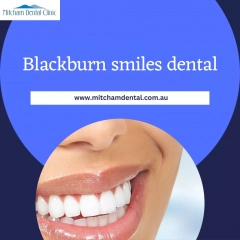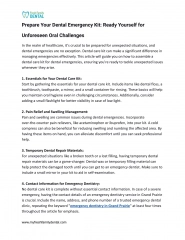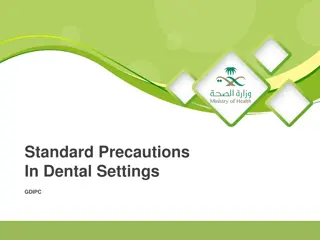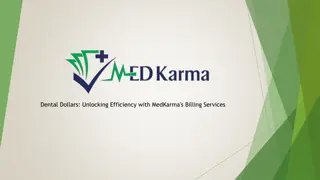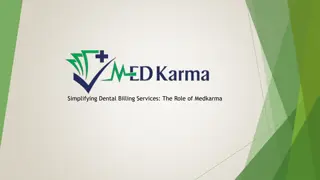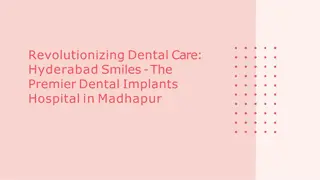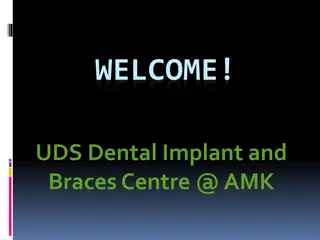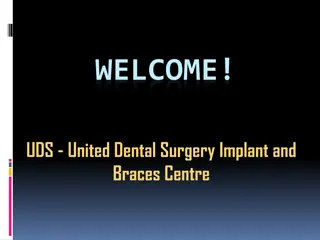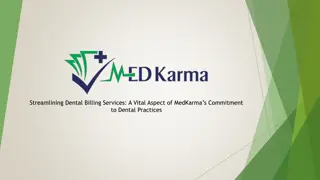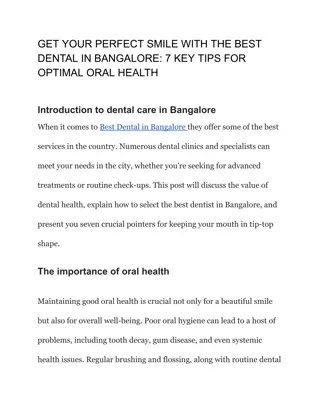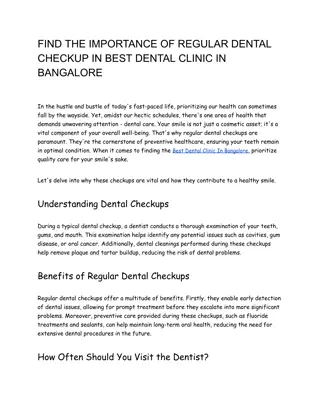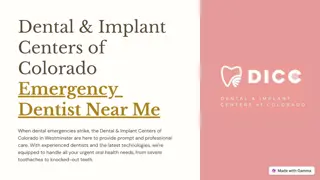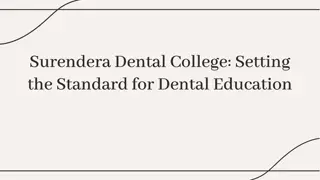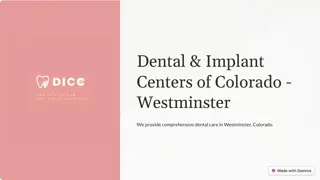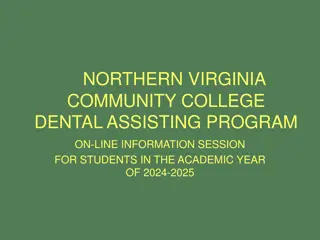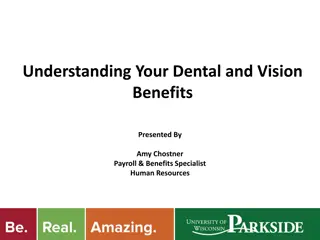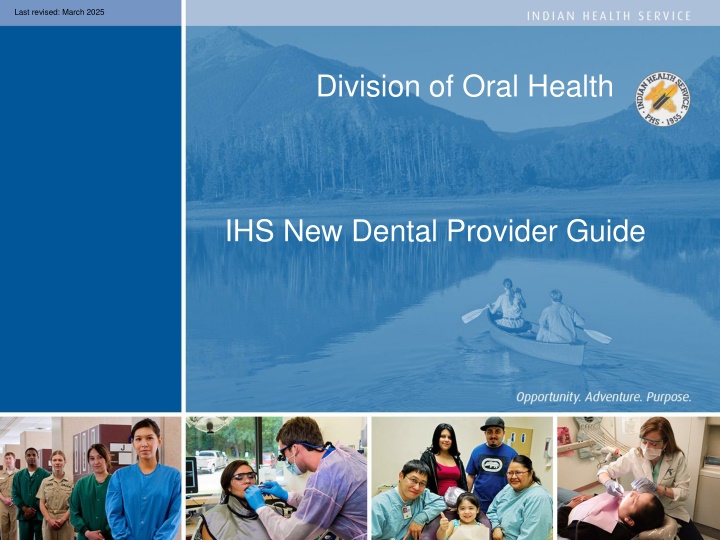
Indian Health Service Dental Provider Guide and Resources
Explore the comprehensive Indian Health Service (IHS) dental provider guide, resources, programs, and initiatives for oral health promotion, disease prevention, and professional development. Discover information on IHS clinics, personnel systems, loan repayment programs, and key concepts like Federal Tort Claims Act and opioid prescribing. Learn about IHS's extensive dental facilities, types of healthcare services provided, and contact information for key IHS Division of Oral Health personnel.
Uploaded on | 4 Views
Download Presentation

Please find below an Image/Link to download the presentation.
The content on the website is provided AS IS for your information and personal use only. It may not be sold, licensed, or shared on other websites without obtaining consent from the author. If you encounter any issues during the download, it is possible that the publisher has removed the file from their server.
You are allowed to download the files provided on this website for personal or commercial use, subject to the condition that they are used lawfully. All files are the property of their respective owners.
The content on the website is provided AS IS for your information and personal use only. It may not be sold, licensed, or shared on other websites without obtaining consent from the author.
E N D
Presentation Transcript
Last revised: March 2025 Division of Oral Health IHS New Dental Provider Guide
Overview Indian Health Service (IHS) Clinics, Areas, Personnel Systems, and Loan Repayment Programs Resources IHS Dental LISTSERVs, Dental Directory, Dental Portal, Continuing Dental Education opportunities, IHS National Dental Specialty Consultants, Dental Support Centers, Field Advisory Committee, and Infection Control Committee Key Concepts Levels of Services, Federal Tort Claims Act, Strategies to Avoid Malpractice Claims, Forms/Guidance, Opioid Prescribing, Infection Control and Prevention, and Alternative Workforce Models
Overview (cont.) Oral Health Projects and Initiatives Contributing to the Future IHS Oral Health Surveillance, Oral Health Promotion Disease Prevention Funding Initiative, Recruitment, and Government Performance and Results Act Dental Directors Dental Directors Meeting, Concepts Management Series, Advertising Dental Vacancies, Dental Position Report, Coding, Billing, and Accreditation
IHS - Indian Health Service Comprehensive health service delivery system serving Approximately 2.8 million American Indian & Alaska Natives Children, adolescents, and adults in 574 recognized Tribes Types of facilities Over 400 dental clinics located in 35 states Nearly all are co-located with a medical program IHS/Tribal/Urban Dental Programs Employees Dentists: ~1,100 Dental Hygienists: ~500 Dental Assistants (including EFDAs): ~2,500 Expanded Function Dental Assistants: ~1,000 Dental Health Aide Therapists: ~60 https://www.ihs.gov/doh/index.cfm?fuseaction=home.about
IHS - Division of Oral Health (DOH) Name Role Contact Information Dr. Timothy Lozon IHS DOH Director Timothy.Lozon@ihs.gov Dr. Joel Knutson Dental Informatics and Project Manager for the IHS Electronic Dental Record Joel.Knutson@ihs.gov Dr. Cheryl Sixkiller National Community Health Aide Program Dental Health Aide Specialist, Dental Clinical and Preventive Support Center Coordinator, IHS National Oral Health Council Chair Cheryl.Sixkiller@ihs.gov Dr. Nathan Mork Oral Health Surveillance Coordinator, Oral Health Surveillance Coordinator, IHS HP/DP Coordinator, IHS DOH GPRA Lead, IHS DOH Recruitment Officer, IHS DOH Risk Management Consultant, CDHC Coordinator Nathan.Mork@ihs.gov Dr. Damon Pope Deputy Project Manager for the IHS Electronic Dental Record, IHS CDE Coordinator, IHS DOH National Dental Infection Prevention, Control & Safety Coordinator, IHS EFDA Coordinator Damon.Pope@ihs.gov Dr. Samuel Mortensen Dental Informatics and Co-Deputy Project Manager for the IHS Electronic Dental Record Samuel.Mortensen@ihs.gov
IHS [Name of Area] The [Name of Area] Area of the Indian Health Service (IHS) provides comprehensive health care services through hospitals, clinics, walk-in centers and community health stations. ____ Federal/direct service ____ Tribally-administered ____ Urban Indian Health Programs. [Picture and information about Area]
IHS - Personnel Systems Civil Service Federal government employee of agency Salary and benefits paid by U.S. government (set by Congress) Commissioned Corps (US Public Health Service - PHS) Can work at tribal clinics (memorandum of agreement required) and federal clinics Generally, same basic pay and benefits as active-duty military Direct Tribal Hire Employee of specific tribe Negotiated salary, benefits, and work week comparable to civil service Contract Dentist Volunteer Dentist 8
IHS - Loan Repayment Programs IHS Loan Repayment Program https://www.ihs.gov/loanrepayment/ Up to $50,000 (minus tax payments) in exchange for an initial two-year service commitment to practice in health facilities serving American Indian and Alaska Native communities Eligible to extend your contract annually until your qualified student debt is paid Eligible professions: dentists, dental hygienists, dental therapists, and dental assistants National Health Service Corps Loan Repayment Program https://nhsc.hrsa.gov/loan-repayment/nhsc-loan-repayment-program Dentists may be eligible to receive an initial award of up to $55,000 for two years of full-time service when they select a service site with a qualifying Health Professional Shortage Area (HPSA) score Eligible professions: dentists and dental hygienists State Loan Repayment Programs are also available. Note: A recipient cannot receive federal financial support from multiple programs concurrently.
Resources - LISTSERVs Stay connected with other dental providers on IHS dental topics by subscribing to the LISTSERVs: - IHS Dental (for I/T/U dental staff) - https://www.ihs.gov/listserv/topics/signup/?list_id=28 - IHS Dental Chiefs (for dental directors) - https://www.ihs.gov/listserv/topics/signup/?list_id=137 - IHS Dental Hygienists (for dental hygienists) - https://www.ihs.gov/listserv/topics/signup/?list_id=211 - IHS EDR (for I/T/U dental staff) - https://www.ihs.gov/listserv/topics/signup/?list_id=222
Resources - LISTSERVs General instructions for joining IHS LISTSERVs: Go to www.ihs.gov/ Under the for Providers tab, click on Listserv E-mail Groups Click on topics on the left-hand side Type in dental in the search field and then click search Click on the IHS dental LISTSERVs you wish to join Type in your name and e-mail, then click subscribe Once you have been approved for the LISTSERV, you will receive an e-mail notification
Resources - Dental Directory Talk with your supervisor or Area Dental Officer to have them add you to the IHS Dental Directory Once you are added to the directory, you will be able to search for other dental providers and establish a Dental Portal & Continuing Dental Education (CDE) account
Resources - IHS Dental Portal (www.ihs.gov/doh) Primary resource for all IHS oral health topics
Resources - IHS Dental Portal Highlights Clinic Tab Caries Risk Silver Diamine Fluoride (SDF) information and videos Caries risk classification and recall intervals Dental Specialties Manual Comprehensive guide to each dental specialty (e.g. pediatric dentistry) Oral Health Program Guide Tools and resources to manage clinical and community dental programs Every dental provider should read this guide at least once
Resources - IHS Dental Portal Highlights HPDP (Health Promotion/ Disease Prevention) Resources Tab Past HPDP Project Reports Resources National Children s Dental Health Month Presentations, GPRA information, dental public health presentations, prevention tools, etc. Monitoring Oral Health IHS Oral Health Surveillance Support Centers Contact information Explore the IHS Dental Portal There are several additional sections with valuable information
Resources - Continuing Dental Education (CDE) Wide variety of in-person, online, and recorded CDE opportunities No cost for federal clinics Cost is $10 per CDE hour for dental staff from tribal programs that have taken their HQ shares e.g. 40-hour course costs $400 1/5-1/10 the cost of non-IHS courses Once registered for course, you will receive a link to the Tuition Payment form and an updated IHS W-9 form CDE courses are promoted on dental LISTSERVs
Resources - Continuing Dental Education (CDE) To access the IHS Dental Portal and CDE website (after you are added to IHS Dental Directory): Go to www.ihs.gov/doh (Dental Portal) Click on Login Click on register for an account Complete the form, then click submit You will receive an e-mail that confirms your account Log in to the Dental Portal Click on the CDE tab on the left to view CDE catalog and course offerings
Resources - IHS CDE: Dental Updates Premier conference of the IHS Dental Program 3-4 day in-person meeting (location varies) with wide variety of presenters both IHS as well as non-IHS Great opportunity to network with I/T/U oral health community Occurs every two years (2021, 2023, 2025) generally in the spring or summer Watch for announcements on Dental LISTSERVs
Resources - IHS CDE: National Dental Challenges Course National Dental Challenges (in-person) Generally available nationally every two years, typically on non- Dental Updates years Orientation course for dentists new to I/T/U dental programs - whether directly out of school or coming from private practice - about the standards of care within our system Topics include: Dental Public Health, Endodontics, Dental Infection Control, Operative Dentistry, Oral Surgery, Orthodontics, Pediatric Dentistry, Periodontics, and Prosthodontics Watch for announcements on Dental LISTSERVs
Resources - IHS National Dental Specialty Consultants (2025-2027) The following consultants are available to help with clinical questions related to their specialty: Oral and Maxillofacial Surgery: Dr. Amy Suhr [Amy.Suhr@tchealth.org] Pediatric Dentistry: Dr. David Burke [David.Burke@cskthealth.org] Periodontics: Dr. Keasha Myrick [Keasha.Myrick@ihs.gov] Endodontics: Dr. Emily Ikahihifo [Emily.Ikahihifo@ihs.gov] Dental Public Health: Dr. Joe Park [joseph.park@srmt-nsn.gov] Prosthodontics: Dr. Roger Oldroyd [Roger.Oldroyd@ihs.gov] Orthodontics: Dr. Amber Foster [afoster1@searhc.org] Specialists Liaison: Dr. Nathan Mork [Nathan.Mork@ihs.gov]
Resources Dental Support Centers (DSC) Get to know your DSC staff Alaska Area Dental Support Center Albuquerque Area Dental Support Center California Dental Support Center Great Plains Dental Support Center Montana/Wyoming Tribal Dental Support Center Billings Area Nashville Area Dental Support Center Oklahoma Area Dental Support Center Also provides support for Bemidji Area Southwest Dental Support Center Phoenix, Navajo, and Tucson Areas Northwest Tribal Dental Support Center Portland Area
Resources Field Advisory Committee (FAC) The FAC of the National Oral Health Council (NOHC) is a subsidiary of and responsive to the Executive Leadership Committee (ELC), composed of Division of Oral Health Headquarters staff and the Area Dental Officers. The FAC is composed of one dentist from each IHS Area who serves as the Area representative, one dental assistant, one dental hygienist, one dental therapist, one ADO, and one DOH Headquarters employee. The FAC consists of the clinical IHS dental staff from Federal, Tribal and Urban (F/T/U) sites. The purpose of the FAC is to develop future IHS leadership and for DOH to gain real-time feedback from clinical personnel across the country. NOHC Mission: To improve the oral health and overall health of Native American / Alaskan Native people. Learn more about the FAC by visiting www.ihs.gov/doh/nohc
Resources- IHS DOH National Infection Control (IC) Committee Committee members comprised of Dentists, Hygienists and Dental Assistants Goals: Develop Area Subject Matter Experts (SMEs) Promote a Culture of Safety Review New IC Guidance/Training Develop and Present Dental IC CDE Inform HQ on Dental IC Changes
Key Concepts - Levels of Services A central tenet of public health is doing the most good for the most people with limited resources, or simply put, do more with less. This reoccurring theme exists among many underserved communities across America, particularly Native Americans communities where the demand for dental care far exceeds existing public resources. Therefore, it would seem prudent to adopt dental public health strategies that provide basic dental care to the largest number of patients. Basic dental care is comprised of levels I-III services which are the most cost effective means to deliver care on a community wide basis. Dental services that alleviate pain (level I) or prevent disease (level II) have a higher priority than services to treat disease in its early stage (level III) or to treat disease that is well established (level IV-V). Level IV and V services are complex, time consuming and quite expensive to deliver. In general, treatment is difficult to render and often requires specialized skills and more chair side time.
Key Concepts - Levels of Services LEVEL I: EMERGENCY ORAL HEALTH SERVICES Dental services necessary for the relief of acute conditions e.g. pain and infection. Examples include: Emergency limited exams, palliative procedures, simple tooth extractions, temporary/sedative restorations, endodontic access preparations to relieve acute pain, denture repair... Level II: PREVENTIVE ORAL HEALTH SERVICES These services help prevent dental disease- e.g. caries and periodontal disease. Examples include: Prophy, fluoride varnish, sealants, OHI, athletic mouthguards LEVEL III: BASIC ORAL HEALTH SERVICES Basic dental care includes those services provided early in the disease process and which limit the disease from progressing further. Examples include: comprehensive exams, restorations, surgical extractions, pulpotomies, SSCs, scaling/root planning, biopsies For more details, please consult the IHS Oral Health Program Guide, Chapter 5 Section D.
Key Concepts - Federal Tort Claims Act (FTCA) Effective only under certain circumstances, including: Scope of official duties (employment) - provider is privileged in writing for procedure Local privileges document Treating patients covered by federal government or tribal contract with the government If a provider is paid (by the patient) in any way Coverage may be void Some contract dentists may not have FTCA coverage If claim is filed, final determination of FTCA coverage is made by Justice Department Local administrators cannot guarantee coverage or give you a letter stating you have FTCA coverage Key Resource for FTCA and risk management topics: IHS Risk Management Manual
Key Concepts - What Constitutes Malpractice? Duty / Breech of duty Necessary elements Deviation from standard of care Injury to the patient Deviation directly caused injury
Key Concepts - Standard of Care Definition The knowledge and skills that a reasonable practitioner would use under similar circumstances. Not necessarily ideal care/outcomes
Key Concepts - Informed Consent Purpose Allows the patient to make an intelligent decision about what is done to his/her body Right to know what they are getting into Uninformed consent = no consent Includes all patient contact that is documented Informed consent, clinical notes, and other forms Documentation of any transfer of information (e.g. phone conversations)
Key Concepts - Informed Consent Elements Nature of the condition (in words the patient can understand) Nature of the proposed treatment Alternative to such treatment General risks involved with the proposed treatment/alternative treatment/no treatment Relative chance for success and failure
Key Concepts - Strategies to Avoid Malpractice Claims Extractions are the most common procedure that elicits a malpractice claim; almost half of extraction claims involve third molars. Gain true informed consent, document it, especially for oral surgery and endodontic procedures. Use official IHS consent forms found on the IHS Dental Portal website www.ihs.gov/doh. Provide oral and written post-operative instructions. Substantial dental bills and negative remarks from private sector providers who provided follow up care can generate malpractice claims. This can potentially be avoided by providing timely access to follow up care. Document accurately. Consider documentation as part of the treatment, rather than something added on after treatment is rendered. Avoid heroics. Promote realistic expectations. Treat one patient at a time: Be here now. Communicate and empathize. Always practice good bedside manners . Please contact the IHS Dental Risk Management Officer, Dr. Nathan Mork, for questions or consultations at Nathan.Mork@ihs.gov.
Key Concepts - Forms and Guidance IHS official forms and guidance documents are located on the IHS Dental Portal at www.ihs.gov/doh, Forms & Guidance Tab. The following are examples of consent forms available for download: Consent for Oral Surgery Consent for Root Canal Treatment Informed consent for Nitrous Oxide Informed consent for Silver Ion Antimicrobials treatment Informed consent for use of Protective Stabilization Consent to treatment by visiting Dental or Dental Hygiene student Direct link to forms: https://www.ihs.gov/DOH/index.cfm?fuseaction=forms.display
Key Concepts - Opioid Prescribing Dentists across the U.S. (not IHS only) provide 18.5 million opioid prescriptions annually. Dentists often provide a patient s first exposure to opioids and are one of the most common prescribers of opioids to patients whose brains are not fully developed, which can alter brain development. More than of all opioids prescribed by dentists go unused or are diverted for non-medical use. Literature states that Tylenol + NSAID is as effective in treating acute dental pain as opioids and many studies state that it is actually superior to opioids. ADA and state dental boards now have guidance on opioid prescribing, opioid training requirements, PDMP use, etc. https://www.ada.org/en/advocacy/advocacy-issues/opioid- crisis IHS has Recommendations for Management of Acute Dental Pain document listed at https://www.ihs.gov/doh that assists dentists with selecting the most appropriate pain medication for patients based on individual medical conditions and situations. All Federal IHS prescribers must complete Essential Training on Pain and Addiction (ETPA) within six months from the start of employment and complete a refresher course every 3 years. https://www.ihs.gov/opioids/trainingopportunities/essentialtraining/
Key Concepts - Infection Control and Prevention During the provision of dental treatment, both patients and dental health care personnel (DHCP) can be exposed to pathogens through contact with blood, oral and respiratory secretions, and contaminated equipment. Following recommended infection control procedures can prevent transmission of infectious organisms among patients and dental health care personnel. The CDC develops evidence-based recommendations to guide infection prevention and control practices in all settings in which dental treatment is provided. For more information, please visit https://www.cdc.gov/oralhealth/infectioncontrol/index.html. Association for Dental Safety (ADS) formally know as (OSAP) offers an extensive online collection of resources and publications. In addition, live in- person and online courses are offered to help advance the level of knowledge and skills for every member of the dental team. For more information, please visit https://www.myads.org/ .
Key Concepts - IHS Alternative Workforce Models Expanded Function Dental Assistant (EFDA) Several types, including periodontal and restorative IHS started training and certifying EFDAs in 1961 EFDAs can significantly increase clinical productivity and access to dental services (by freeing up the dentist to see additional patients) EFDAs must be certified by Headquarters (there are specific requirements) and can only practice under direct or indirect (not general) supervision
Key Concepts - IHS Alternative Workforce Models Community Dental Health Coordinators (CDHC) Created by the American Dental Association (ADA) in 2006 to break down the barriers that prevent people from receiving regular dental care and enjoying optimal oral health, focusing on community-based prevention, care coordination and patient navigation to link people with dental health resources. Dental Health Aide (DHA) Includes: Primary Dental Health Aide (PDHA) I & II Expanded Function Dental Health Aide (EFDHA) I & II Dental Health Aide Hygienist (DHAH) Implemented by Alaskan tribes in 2004 Can provide a variety of treatments based on level of training
Key Concepts - IHS Alternative Workforce Models Dental Health Aide Therapist (DHAT) DHAT training requires the equivalent of three academic years of training, which can be accomplished in two calendar years, via compressed academic schedules The Alaska Native Tribal Health Consortium (ANTHC) DHAT training program was implemented in 2004; Washington s DHAT training was implemented in 2022 CODA Training programs are currently located in Alaska, Minnesota and Washington state Training in dental disease prevention and dental treatment skills DHATs are now practicing in Alaska, Washington, Oregon, and Idaho For more information on DHAs and DHATs visit: https://www.ihs.gov/chap/
Key Concepts - DHA/DHAT Background An innovative local solution to meet a local need Since the inception of the DHA/DHAT Initiative, a greater number of American Indian and Alaska Native communities have had access to oral health care Dental Health Aides and Dental Health Aide Therapists have become integrated into many healthcare teams serving American Indian and Alaska Native communities Many Dental Health Aides and Dental Health Aide Therapists have personal and cultural ties to the communities and populations they serve, and their relevant knowledge of traditions, norms and practices lead to great acceptance and appreciation of the care they provide
Recent Oral Health Initiatives & Projects Learn about IHS oral health initiatives by visiting the initiatives section of the Dental Portal (www.ihs.gov/doh). Initiatives include: Early Childhood Caries (ECC) Collaborative (2010-2017) Silver Ion Antimicrobial Demonstration Project (2014-2017) Periodontal Treatment Initiative (2015-2017) Dental Workforce Efficiency Initiative (2016-2017) Oral Health Literacy Initiative (2019-2022) Give Kids A Smile Campaign (2020-present) Medical-Led SDF Project (2022, 2024) Dental Cognitive Assessment Project (2023) Sexually Transmitted Infection Education Initiative (2023) Triaging and Treating Dental Conditions in the Emergency Department (2022-2023) Multi-Directional Integration of Oral Health, Primary Care, and Mental Health (2024) Community Dental Health Program (2023-present)
Contributing to the Future - IHS Oral Health Surveillance For I/T/U dental programs to better understand the oral health of their patients, dental programs are encouraged to participate in IHS Oral Health Surveys. During survey years, the survey focuses on one of four age groups: 1-5 years old 6-9 years old 13-15 years old 35+ years old For the survey, dental programs are randomly selected Participation is voluntary Even if your program is not selected, you are welcome to participate Local results are shared with clinic s dental director National results are reported in data briefs. To learn more about the IHS Oral Health Surveillance Program and to view past data briefs, please visit www.ihs.gov/doh and click on Data Briefs.
Contributing to the Future - Oral Health Promotion Disease Prevention (HP/DP) Funding Initiative Funding initiative (up to $10,000, pending funds availability) for dental program HP/DP projects Project focus (e.g. children under six years of age) is described in request for proposals Great way to start prevention or early intervention programs for the communities you serve Request for applications generally announced in October Any IHS-direct, Tribal, or IHS-funded Urban dental program is eligible to apply for funding Awarded programs submit a final written report and participate in a national webinar
Contributing to the Future - Recruitment Consider recruiting for the Indian Health Service: Schools Dental, Dental Hygiene, and Dental Assisting Talk with your Area Dental Officer about presentation slides that may be available Mention potential IHS externship opportunities Dental meetings Contact your Area Dental Officer or Area Recruitment Officer if you are interested in volunteering at a booth You generally need to register several months in advance for a booth
Contributing to the Future - Government Performance and Results Act (GPRA) GPRA is based on a federal law (established 1997) to show Congress how different agencies, including the IHS, perform on a specified set of metrics. GPRA Modernization Act of 2010 (GPRAMA) requires agencies to use performance data to drive decision making GPRA year is October 1 September 30 (same as fiscal year)
Contributing to the Future - Government Performance and Results Act (GPRA) Dental GPRA Measures Increase access to dental services for the American Indian/Alaska Native population all ages (2024 Target: 24.40%) Increase the proportion of 2-15 year olds receiving dental sealants (2024 Target: 9.90%) Increase the proportion of 1-15 year olds receiving at least one application of topical fluoride (2024 Target: 21.0%) Strategy: use a public health approach (e.g. community-outreach activities) to reach these goals For additional strategies to improve GPRA performance, view [recorded webinar]: https://www.ihs.gov/DentalCDE/ - search for course DE0236 (2019)
Additional Information for New Dental Directors
Dental Directors Meeting Meeting focuses on dental clinic management topics Excellent way to share ideas and network with other dental directors Meeting details are sent via the Dental Chiefs LISTSERV Coordinators: Dr. Monica McKee (monica.m@okcic.com) Dr. Joseph Salamon (joseph.salamon@senecahealth.org) Dr. Angela Fornetti (angela.fornetti@hichealth.org)
Dental Directors - Concepts Management Series IHS Concepts of Dental Clinic Management Series In-person courses open to all IHS direct and Tribal Dental Directors Introductory (Concepts I), Intermediate (Concepts II) and Advanced (Concepts III) Topics include: personnel management, budget management, program management, leadership, and socio-behavioral skills Learn more about this course at the IHS CDE website
Dental Directors - IHS Dental Vacancies There are two IHS systems to advertise vacancies at www.ihs.gov/dentistry: 1) Job Opportunities managed by the IHS Office of Human Resources (OHR), this list includes dental staff job openings at IHS-direct sites only. 2) More Jobs managed by IHS DOH, this list is available for I/T/U dental programs to advertise dentist and dental hygienist openings. To submit new vacancies to More Jobs, please contact your ADO, for the vacancy announcement form. After completing the form, send it to your ADO who will review and submit the information for you. Note: Future openings can be advertised on More Jobs before an official advertisement.
Dental Directors - Dental Position Report (DPR) Uses information from the IHS Dental Directory (www.ihs.gov/dentaldir) to calculate staffing levels at each clinic Dental directors should update the dental directory: When new positions are added (or removed) from the clinic roster When staffing changes (New hires, personnel leaving) Dental Directory only needs to be edited when there are changes For detailed instructions on how to update your clinic s DPR, email IHSEDR@IHS.GOV. Instructions are sent monthly via the Dental Chiefs LISTSERV (Refer to previous slides on LISTSERVs)
Dental Directors - Coding Accurate coding is as critical for IHS clinics as it is for private practice clinics. Recommend each clinic purchase at least one ADA CDT code book The ADA CDT Coding Companion book is also very useful Code based on care provided; (Not based on what you might want to get paid!! Avoid temptation of fraud!) Be familiar with State & specific insurance plan benefits for your clinic scenario. Medicaid benefits are unique in each state, Clinics may have specific agreements impacting benefit reimbursement IHS EDR Program provides an annual coding guidance update CDT updates on IHS Dentrix Enterprise EDR system every year

